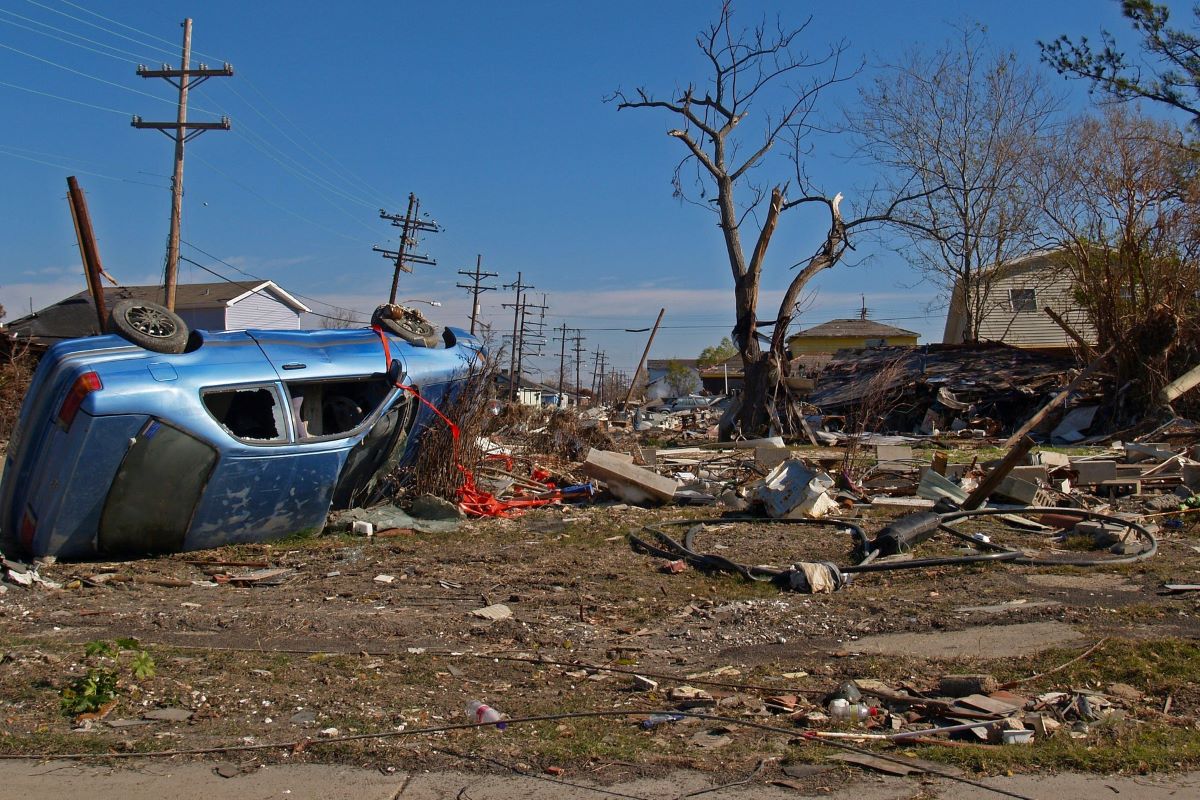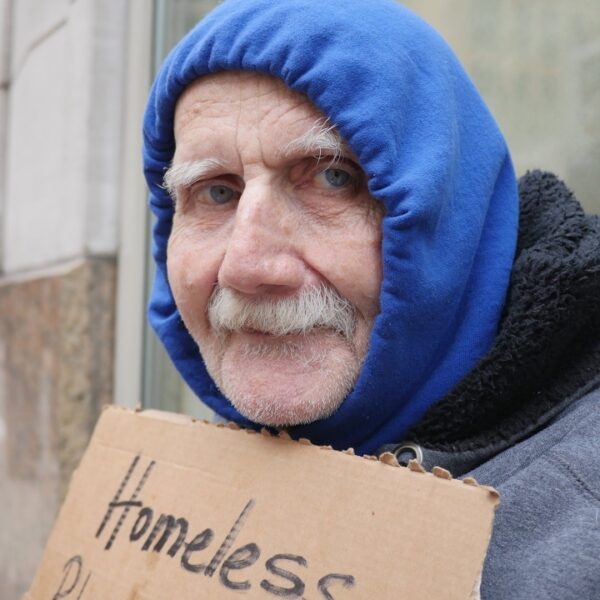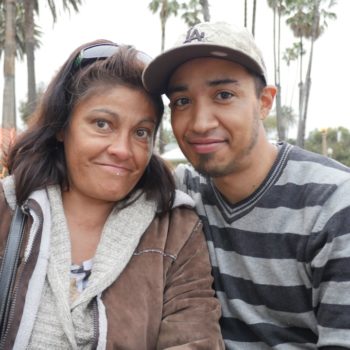Hurricane season is inching around the bend and the first named storm of the season (Subtropical Storm Andrea) has already touched down prior to June 1st. A premature start to hurricane season is a trend that’s been ongoing for five consecutive years. Intense tropical cyclones with winds exceeding 74 miles per hour stir up in the Atlantic Basin and dole out rapid blows across the coast. Such hurricanes claim approximately 10,000 lives per year. While the damage might seem evenly distributed, the harsh reality is anything but equal.
Statistics suggest that lower-income Americans are more at risk for post-storm damage. This includes displacement. The end result, of course, is homelessness. Sadly, an astounding 14 million plus people become homeless every year as the direct result of extreme weather conditions. Of course, this is no reflection on the storms. Nature strikes at random and at will. Rather, systematic flaws exist in pre-storm America. These flaws are then revealed amid the tumultuous clouds.
Here, we’ll focus solely on hurricanes and the major role they play in the displacement of economically vulnerable citizens.
Hurricane Michael: 325,000 Evacuated but Only 6,000 People Sheltered
In the face of natural disaster, economic disparity rears its ugly head too often. This was definitely the case when this Category 4 storm swept the Panhandle, crushing everything in its wake. Even before the 155-mile winds soared over the coast, poor people, with less money for supplies, less insurance coverage, and poorly constructed dwelling spaces, were already at an extreme disadvantage. So, when 325,000 residents departed from their homes, only the richest among them had access to proper evacuation supplies, which include, among other things:
- Money to leave
- Money to temporarily relocate
- A strong enough structure or insurance policy to secure the home front for the future
- Money to store prized possessions until the storm is over
Everyone who couldn’t afford to skip town and start a new temporary life someplace else fell by the wayside. In mid-October, 1.3 million houses and business buildings had no power. Over 98,000 residents reached out to the government for help with housing. However, only about 18,000 received rental assistance. Only about 6,000 were given a bed in the 80 available shelters stretching from Florida to Virginia with Georgia, Alabama, and the Carolinas in between.
Tent Cities Rise Above the Wreckage
In Bay County, Florida alone, approximately 20,000 people ended up homeless, of which 7,800 still are. Tent cities rise up out of the wreckage making the decimated landscape look even more bleak. Tens of thousands of people say they went without food in a never-ending wait for FEMA supplies. The cold November broke many hearts as shelter from new storms was nowhere to be found. One man spoke of the horror of trying to hold his tent down with his bare hands, while soaking, and dripping, and feeling unseen. Perhaps being unseen isn’t only a feeling in this scenario. Consider the 1,000 plus residents who remained missing long after the hurricane had cleared.
If this tragedy were a bit more novel, officials could claim they were simply ill-prepared. But Florida and the Carolinas are among the top 10 most hurricane-prone destinations in the USA.
Hurricanes occur in these regions so frequently that they have their own season, starting in June. Yet, time and again, low-income hurricane survivors face displacement, homelessness, and the pangs of even more extreme poverty.
Here’s a terrifying thought: What if the system isn’t broken and functioning exactly as it was designed?
Hurricanes by the Approximate Number of Displacements Caused

The chart above depicts a handful of impactful hurricanes that caused major displacement and other housing issues for impoverished Americans. It’s important to bear in mind that some of this data wasn’t compiled until long after these hurricanes hit. This means the real statistics were likely much higher than those found in the reports.
Picking Up the Pieces: How Hurricanes Make Poor People Poorer
In the devastating aftermath of disaster, shell-shocked and newly homeless residents face even more obstacles if they survive their time on the streets. Shelters are often ill-equipped to handle the volume of newly displaced people. People construct tent cities due to a lack of viable alternatives. This means newly homeless people face social issues like criminalization and the isolated state of living unsheltered. But that’s not all. Economic downfalls wait in the wings.
Insurance companies rarely offer affordable flood coverage. Housing prices actually increase at the time when people need affordable housing more than ever. Unemployment rates skyrocket. The Federal Reserve Bank of New York in corroboration with authors Zachary Bleemer and Wilbert van der Klaauw issued a report entitled: Disaster (Over-)Insurance: The Long-Term Financial and Socioeconomic Consequences of Hurricane Katrina. In it, you will find some soul-crushing statistics such as:
- Residents who couldn’t salvage their houses had significantly lower credit scores 10 years after the hurricane hit
- Those same residents were also much less likely to own homes again
The homeless homeowners of Hurricane Katrina are those individuals who had completely paid off their mortgages when their houses were demolished. Traditional insurance did not cover these individuals for the disaster. You might imagine the frustration of becoming homeless after you spent your entire life paying off your house.
It Gets Worse: Hurricanes Make the Rich Richer
In a controversial novel that explores the path of poverty from natural disaster, author John Mutter reflects on the idea that these “coincidences” are simply too convenient to be happening by accident. He went on to reveal that Haiti only received about 2.5% of the donations accrued by the Haitian Relief Project, which brought in a profit of $195 million. The racial and economic disparities of Hurricane Katina were yet another highlight as his novel shows that 10 years after the disaster, the city of New Orleans houses 100,000 fewer African American residents than it did during the pre-Katrina era.
Inequality streamlines at multiple avenues when disaster strikes. For example, insurance companies racked up a cool $400 million in profits post-Hurricane Sandy. This is because flood insurance is an additional expense that lower-income homeowners cannot afford. And, officials denied post-hurricane disaster aid for the Pine Ridge Reservation, which is currently one of the most impoverished regions in the US.
Hurricane Season Has Just Touched Down
It is hurricane season yet again and your neighbors surrounding the Atlantic need your help. Talk to your representatives about what steps they’re taking to avoid the displacement and poverty that are notorious for being in the eye of the storm.













